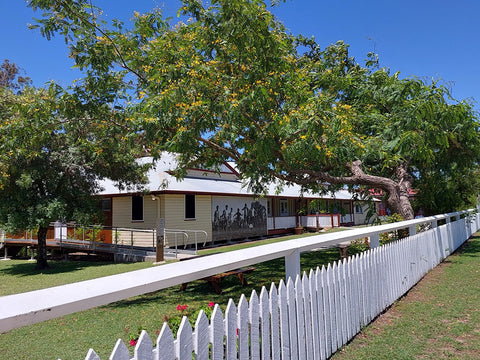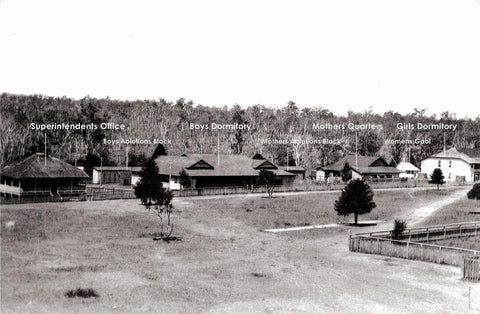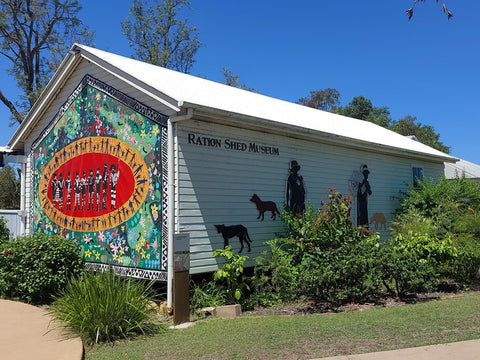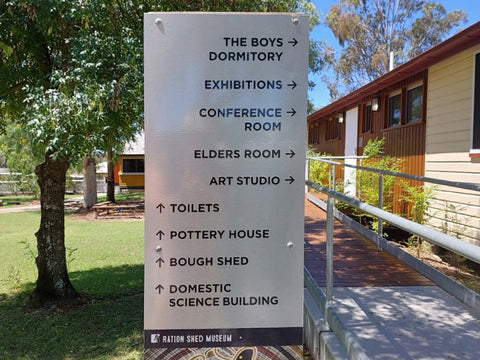
Cherbourg Historical Precinct
The idea for establishing a historic precinct grew out of the celebration of Cherbourg’s centenary in 2004. Sandra Morgan and her sister Lesley Williams were collecting items for an historic display when they discovered that the old Ration Shed (constructed 1927) at the bottom of the footy oval – still intact. It was from the Ration Shed that those on the Settlement received rations, primarily flour, sugar and meat and at times rice, oatmeal and sago, in exchange for work undertaken within the Settlement. They decided that the building should be preserved and relocated back to the centre of the settlement and adapted as a museum.
The success of the project prompted several members of the community to consider the conservation of other historic buildings, specifically the Superintendent’s Office, Boys Dormitory and Domestic Science building. The group wanted to create a space where they could tell their stories, share their painful past and celebrate their survival.
The Boys’ Dormitory (constructed 1928)
The dormitory system was an integral part of Cherbourg soon after it was established in 1901. The Barambah/Cherbourg reserve was regarded as more than just a dumping ground for displaced Aboriginal people but as a place for caring and ‘reforming’ Aboriginal children. Under the Reformatory Schools Act, ‘any child born of an Aboriginal or half caste mother’ was deemed to be a ‘neglected child’ and as such was liable to be sent to a reformatory or industrial school. As in many parts of Australia, boys and girls in Cherbourg were housed in dormitories, cruelly separated from family and community. This had a major impact on our people, something we still feel today. Today there are a few remaining Elders in Cherbourg who survived those times and have stories to tell of those painful times.
The former Domestic Science Building (constructed 1940)
Indigenous women were trained in domestic skills such as cooking and sewing. Young women were used as a source of domestic labour in the outside community. Men and boys were contracted out for work on farms and stations. In this regard the Settlement served as a de facto labour depot.
Visit the Cherbourg Memory Project
Our Cherbourg Memory web app allows you to browse our archive of photos and videos as well as discovering aboriginal history in South East Qld with our Decade by Decade and Theme timeline apps.





